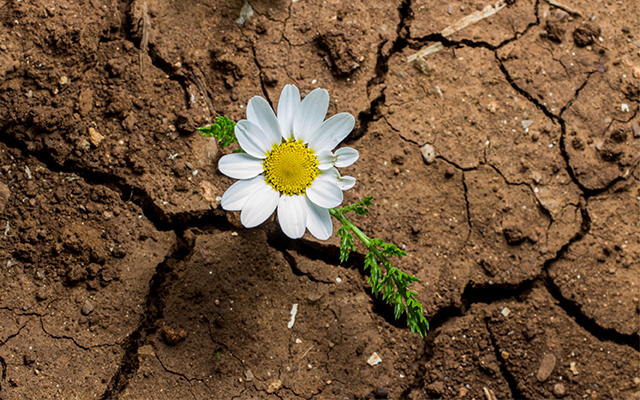I’ve been obsessing a bit lately over an intriguing development taking place within the palm of my right hand. Several months ago, a curious dimple appeared near my pinky, followed by a callous-like ridge rising in the same vicinity. More recently I’ve begun to detect a taut cord that seems to lead from my ring finger down through my wrist. It’s not exactly painful, only stiff. I find myself constantly stretching my hand to loosen it up.
My Chinese medicine practitioner has pronounced it “interesting” and speculated that it may be connected to some heart issues; a quick search on the Web, however, made it pretty clear that I’m suffering from something called Dupuytren’s contracture. Doctors haven’t figured out what causes it, though it’s likely the result of a genetic glitch — my younger brother has a pretty severe case.
I bring this up not to elicit any sympathy (there’s nothing more tedious than listening to geezers whining about their afflictions) but to illustrate a central point Barbara Ehrenreich raises in her new book, Natural Causes: An Epidemic of Wellness, the Certainty of Dying, and Killing Ourselves to Live Longer. The body, she points out, is not a harmonious, predictable organism that we can protect by eating right, exercising religiously, and managing our stress. Stuff happens no matter what we do.
“The body — or, to use more cutting-edge language, the ‘mind–body’ — is not a smooth-running machine in which each part obediently performs its tasks for the benefit of the common good,” she writes. “It is at best a confederation of parts — cells, tissues, even thought patterns — that may seek to advance their own agendas, whether or not they are destructive of the whole.”
This cellular capriciousness may be most evident in the behavior of immune cells — especially the voracious macrophages — that attack healthy cells seemingly on a whim, Ehrenreich notes. And they may be responsible for many of our most vexing illnesses, including certain cancers, heart disease, and autoimmune disorders. “We need to admit that instead of acting as a harmonious whole, the body can serve as a battleground where its own cells and tissues meet in mortal combat,” she writes.
For Ehrenreich, who holds a PhD in cellular immunology, this “dystopian view of the body” has led her to question everything from health screenings and exercise regimens to mindfulness training and longevity research. Now in her 70s, the best-selling author proclaims that she’s old enough that her eventual death cannot be viewed as tragic, so she’s determined to live out the remainder of her days without incurring any of the annoyances that come with the pursuit of a longer life. She still exercises regularly (though not strenuously) and eats consciously, but there will be no more mammograms or other preventive interventions. “I will seek help for an urgent problem,” she explains, “but I am no longer interested in looking for problems that remain undetectable to me.”
Her goal is simply to enjoy the remaining time her fickle cells allow her to live. She admits that this approach may seem defeatist amid our culture of obsessive self-preservation, but she suggests we all have better things to do with our time and energy. “We would all like to live longer and healthier lives; the question is how much of our lives should be devoted to this project, when we all, or at least most of us, have other, often more consequential things to do.”
A self-professed social scientist, Ehrenreich laments our culture’s manic embrace of wellness programs that she says have led us to gradually accept the premise that if you’re not aging gracefully it’s your own damn fault. (“Or to put it another way, every death can now be understood as suicide.”) But the body has other ideas, she explains, noting that some 40 percent of people over 65 suffer from at least one disability.
“Yet we soldier along making occasional concessions to arthritic joins or torn muscles but always aware that any major cessation of effort, say for two weeks or more, could lead to catastrophic collapse.”
The real problem, Ehrenreich argues, is our grim attachment to the self, a neurosis she traces back to the Renaissance and believes may have reached its apex in our current wellness-obsessed culture. The modern language of self-regard that tells us to “believe,” “esteem,” and “love” ourselves mimics a kind of religious liturgy that promises joy but seldom delivers. That’s because the self cannot be both the subject and the object of such esteem, she explains.
“Many historians have argued that the rise of self-awareness starting in roughly the 17th century was associated with the outbreak of an epidemic of ‘melancholy’ in Europe at about the same time, and subjective accounts of that disorder correspond very closely with what we now call ‘depression’,” she writes. “Chronic anxiety, taking the form of ‘neurasthenia’ in the 19th century, seems to be another disease of modernism. The self that we love and nurture turns out to be a fragile, untrustworthy thing.”
Ehrenreich is no fan of Western Buddhism, at least as it’s practiced in the mindfulness movement (“sliced up, commodified, and drained of all reference to the transcendent”), but her solution to our rampant self-preservation epidemic might just as well be delivered by Thich Nhat Hanh or the Dalai Lama: Kill the self.
When you realize — and accept — that you only exist as an impermanent speck in the universe and that it will all go on just fine without you, she explains, you can face your demise with more tranquility than if you believe you’re indispensable to its future prospects.
“It is the idea of a continuous chain of human experience and endeavor that has kept me going through an unexpectedly long life,” she writes. “I will stumble and fall; in fact, I already stumble a lot, but others will pick up the torch and continue the race. It’s not only ‘my work’ — forgive the pompous phrase — that I bequeath to my survivors but all the mental and sensual pleasures that come with being a living human: sitting in the spring sunshine, feeling the warmth of friends, solving a difficult equation. All that will go on without me. I am content, in the time that remains, to be a transient cell in the larger human super-being.”
Ehrenreich is on to something here. If we have no control over our dystopian bodies, why worry about the various afflictions they’re bound to deliver as we grow older? Why not just accept whatever comes our way and deal with it as best we can in each moment — without dwelling on its mysterious cause or clinging to some desired outcome? That allows us to go out into the world each day and view things the way they really are.
And while you’re out in the world, if you happen to run into a geezer obsessively stretching out his right hand, that would be me.




This Post Has 0 Comments